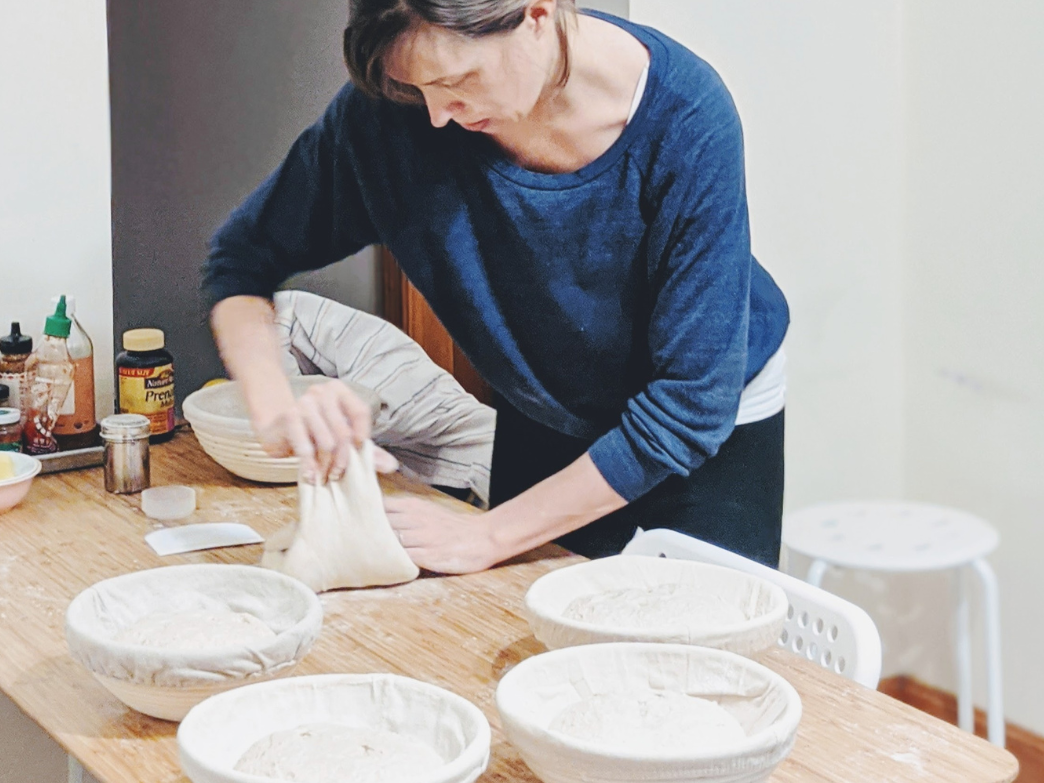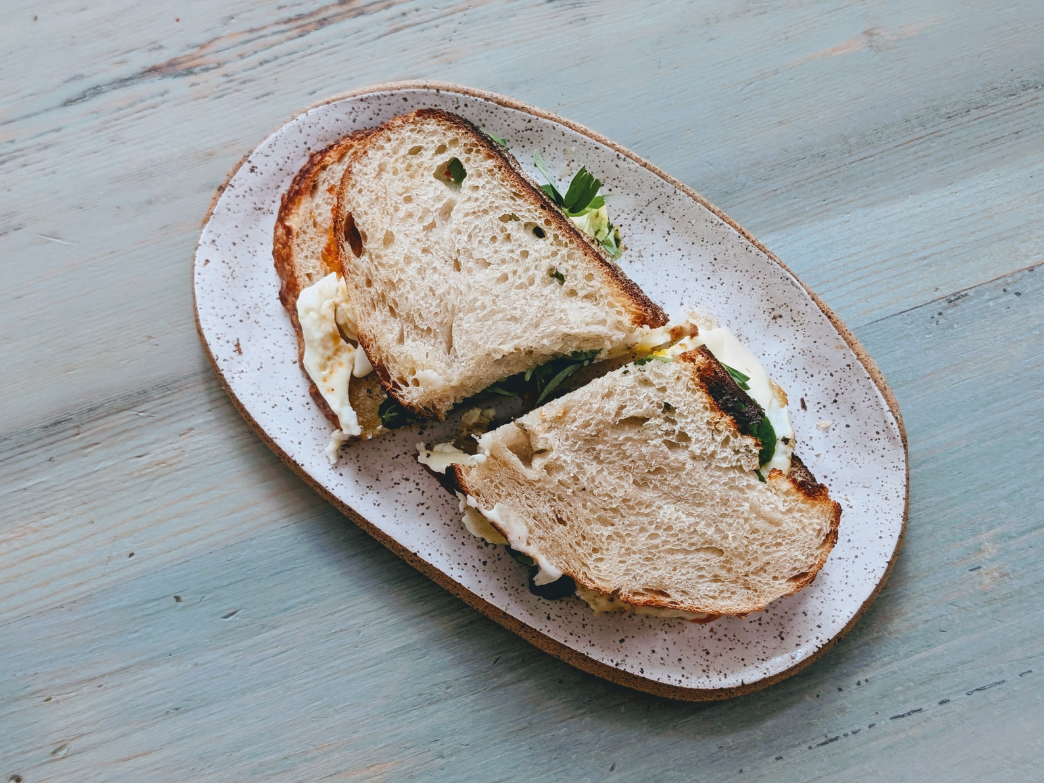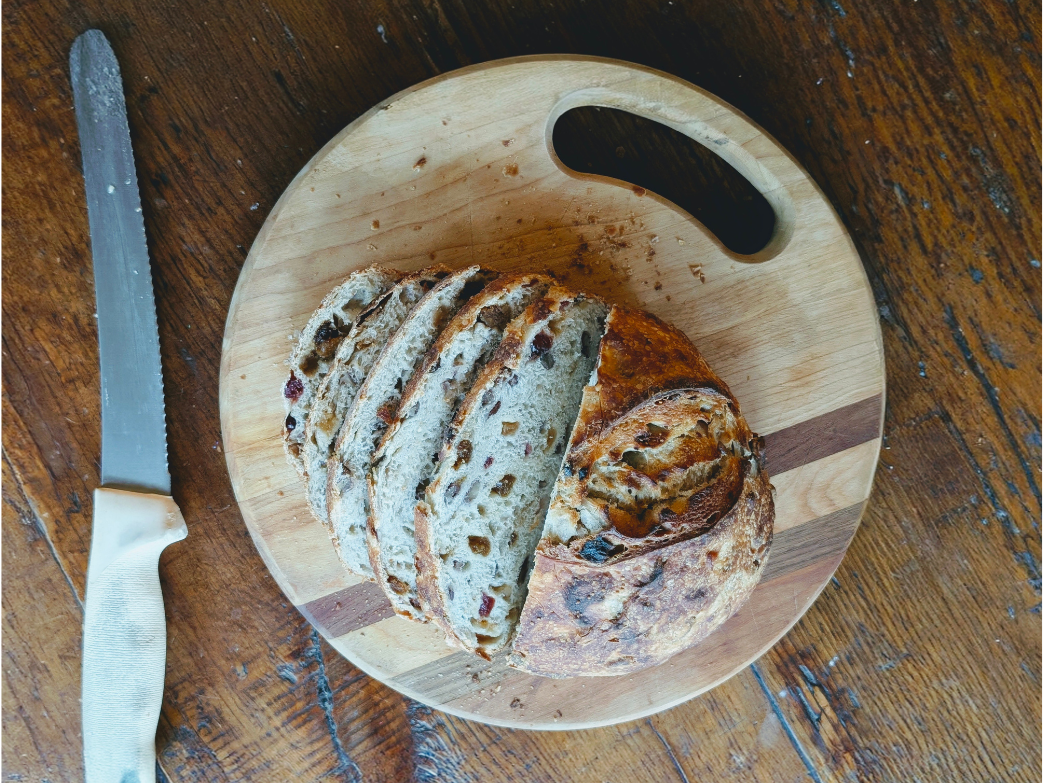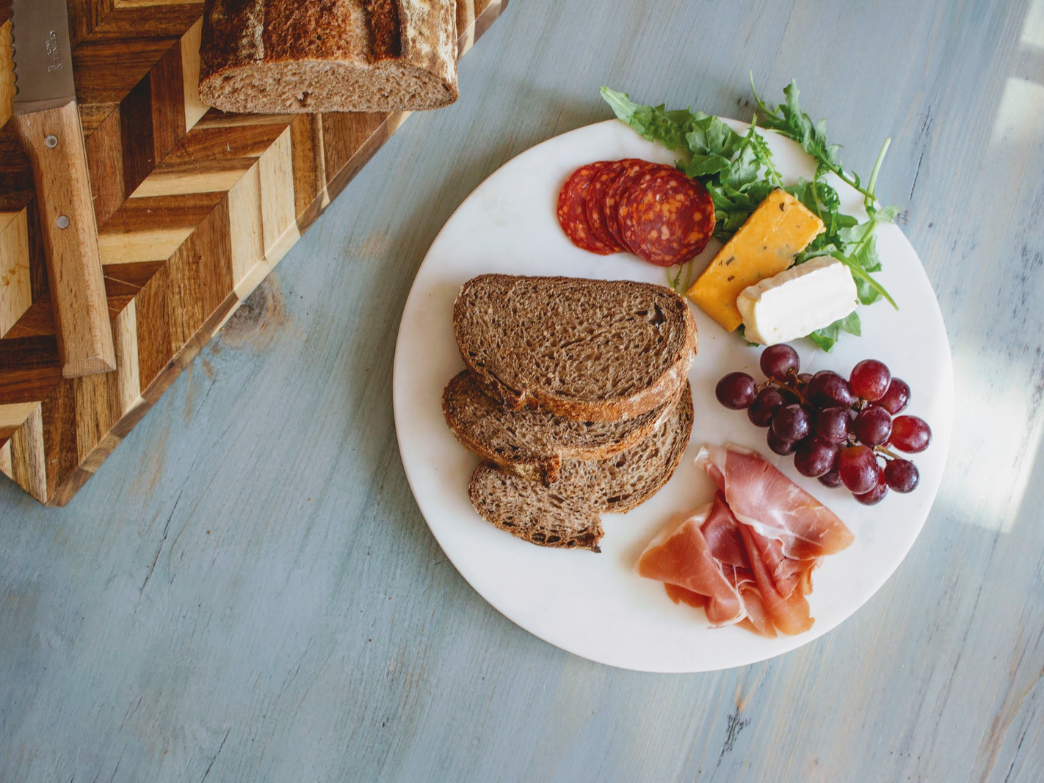By Lucy Yanckello, Ph.D.
There is not much that beats the smell of homemade bread cooking in your oven or the taste of a fresh slice. Baking bread is a culinary experience that is sure worth the effort, but are there health benefits too? Read on to learn more about why the time and finesse it takes to make your own bread might just be worthwhile for your health.
Is it healthier to eat homemade bread? Is it healthier to make your own bread or buy it?
The biggest benefit of making your own bread is that you choose every ingredient that goes into the loaf – from the highest quality whole grain flours, to leavening agents, eggs, and dairy. Other important ingredients to be able to control are the sugar and salt content – both are often much higher than necessary in store-bought bread. Fat content can also be selected for. Opt for the addition of heart-healthy unsaturated fats such as olive oil or safflower oil. Lastly, commercially prepared breads often contain preservatives or other artificial ingredients to boost flavor and shelf life – these are not necessary in homemade breads.
Is it ok to eat homemade bread everyday?
It is important to remember that bread (and carbs) are not the enemy. Only those with a medical condition that precludes them from eating wheat-based products should limit their intake of bread (or those who just don’t like it!). Homemade bread has a lot of health benefits if prepared with high-fiber ingredients (e.g., whole grain flours, ground flaxseed, whole oats) which also increase the protein content. Fiber is important in regulating digestion and plays a role in lowering cholesterol. Higher protein and fiber content allows foods to keep you fuller for longer, ultimately reducing snacking and curbing cravings.
Is bread made in a bread maker healthy?
Bread baked in a bread maker is just as healthy as bread baked in an oven. The only cons of bread in a bread maker are logistical, not nutrition. For one, the paddles used to knead the dough leave a hole in the middle of the bread because they are left in during baking. Additionally, you can only bake one loaf at a time in a bread maker, whereas an oven can hold multiple. Just as with oven baked homemade bread: because you control the ingredients, you control the health benefits!
What is the healthiest type of homemade bread?
Any type of bread can fit into a healthy diet, however bread that includes whole grains or higher amounts of fiber has higher health benefits. Fiber is important in regulating digestion and plays a role in lowering cholesterol. Higher protein and fiber content allows foods to keep you fuller for longer, ultimately reducing snacking and curbing cravings.
What makes homemade bread better?
One of the biggest benefits of homemade bread is that you select all of the ingredients that go into the dough. This lets you be very picky regarding what you want in your bread, and more importantly what you don’t want. Although making bread is time intensive and sometimes taxing, there is nothing like eating a piece of warm homemade bread fresh from the oven.
What is the easiest way to make homemade bread? What is the secret to making homemade bread?
Most homemade bread requires kneading, which is a hard task. However, there are great recipes that don’t require this step. No knead breads, or breads made in a bread machine, may be a good step for beginners.
Another option is to buy bake-from-frozen homemade bread from a bakery like Wildgrain where there is ingredient transparency. This means you can see exactly what goes into your loaf – often a combination of just four things: flour, water, salt, and yeast. And you’ll still get the fresh bread scent in your home when you bake the loaf in the oven prior to eating!
What adds flavor to homemade bread?
There are a few simple ways to add flavor to homemade bread. The first is to be sure you are using a quality flour, which is often overlooked by beginner bakers. Because it is the main ingredient, it is important to keep flour in mind. Additionally, adding ingredients such as fats (e.g., olive oil, coconut oil) or sweeteners (e.g., malt, honey) will help ramp up the flavor of your loaf. There are also always add-ins such as nuts and berries, too!
What makes homemade bread more airy?
The texture of your bread is dependent mainly on how much gas is present in the dough. Carbon dioxide is responsible for the air bubbles present in bread and makes it lighter and fluffier. The gas is created as the yeast grows, meaning the more yeast grows, the more gas present – this will leave you with a light and airy loaf.
To get this result, controlling the temperature of the bread is important. You must give it ample time to rise, but not too much time. There is a sweet spot between when the bread has risen too much and not enough. Once you see blistering in your dough, it has gone too far - try to get it in the oven before the blistering starts. If it does blister, poke the blisters with a toothpick and get the bread in the oven as quickly as possible!
Where can I buy the best fresh bread to bake at home online?
At Wildgrain, we specialize in making high-quality, fresh baked goods that are delivered directly to your door. Wildgrain is the first bake-from-frozen delivery subscription service for breads, pastries, and fresh pastas. Some of our popular breads include sourdough whole wheat loaf, and everything sourdough bread. Plus we have fresh churned butter as a delicious complement. Learn more about Wildgrain and our artisanal baking and cooking methods.
About the Author
Lucy Yanckello received her Ph.D. in nutrition from the University of Kentucky College of Medicine. She currently works as a medical writer and enjoys being able to help people better understand nutrition and science.
This content is for informational use only and does not replace professional nutrition and/or medical advice, diagnosis or treatment. It is not a substitute for and should not be relied upon for specific nutrition and/or medical recommendations. Please talk with your doctor about any questions or concerns.



